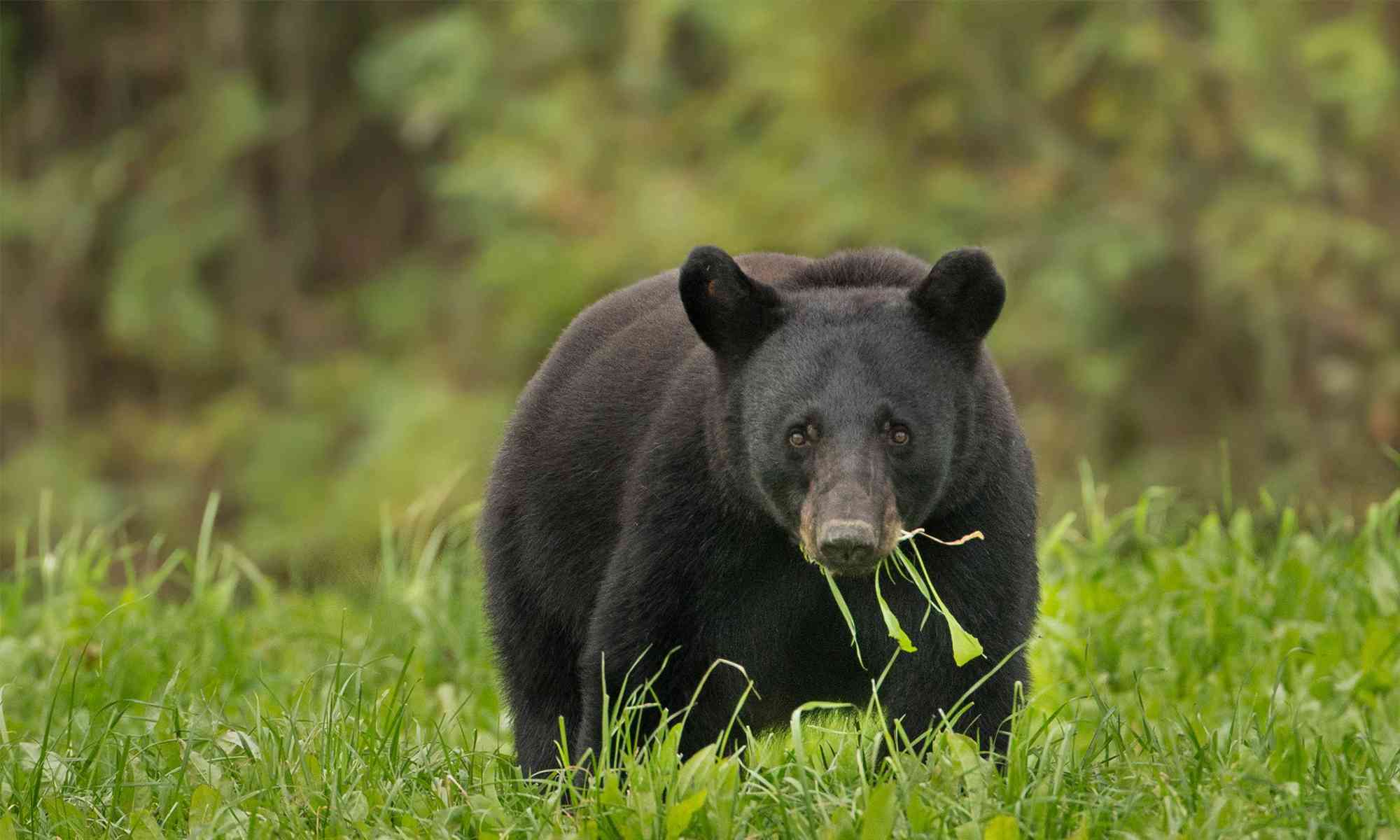The American black bear is distributed throughout North-America and lives in Alaska, Canada, and even Florida and Mexico. The American black bear lives primarily in national parks, such as Yellowstone, in coniferous forests (up to 2,100 meters). The American black bear can also be found in the tundra and in lowland areas close to water. American black bear fur can have many different colours: black, brown, cinnamon, grey and even almost white.
Diet
The diet of the American black bear consists mainly of vegetable products like berries, roots, acorns, twigs, nuts and fruits. They will basically eat whatever is available. The American black bear is an omnivore and will also feed on insects (ants), fish, carrion as well as small and bigger mammals like deer, elk and other vertebrates.
Hibernation
The American black bear generally goes into a dormant state during the winter months, although not all black bears do so. Some bear populations in the south, such as in Mexico, do not hibernate at all as winters are generally mild and food supplies remain constant. The American black bear is the most active of all bear species. The American black bear preferably hibernates in a hollow tree, a cave, underneath rocks or fallen trees.
Social behaviour
The American black bear is mostly solitary, with the exception of females that live with their young. Bears often gather in places where food is in abundance.
Status
It is estimated that there are more than 600,000 American black bears living in the wild. Threats to the American black bear population are loss of habitat and poaching. However, the population is reasonably stable and is even increasing in some areas, such as in national parks. The IUCN-status of the American black bear is listed as ‘Least Concern’. Some populations in the east of the United States are however threatened.
Factsheet American black bear (Ursus americanus)


